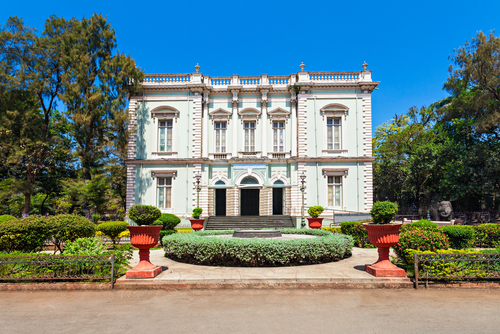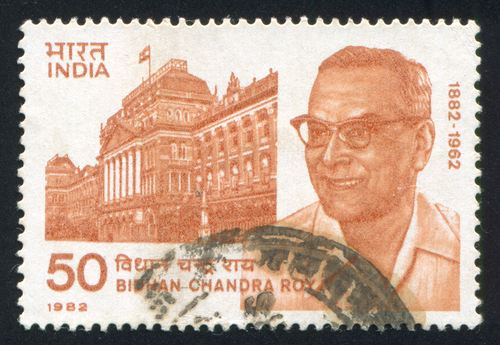Independence day special: Doctors who answered the call for freedom
M3 India Newsdesk Aug 15, 2020
On the occasion of Independence Day, we shed a brief spotlight on some medical stalwarts who were part of India's freedom struggle landscape.
Quite naturally, public leadership and a powerful intellect comes naturally to doctors, since it attracts some of the most talented and versatile society has to offer. So it is probably no surprise that some medical stalwarts were also ardent freedom fighters, and often led many movements big and small in the places where they lived.
On the occasion of Independence Day, we shed a brief spotlight on some such medical stalwarts.
Dr. Bhau Daji Lad (real name: Dr. Ramachandra Vitthal Lad)
Many in Maharashtra and even outside may recollect this name due to it being given to the phenomenal museum in Mumbai. However, the person behind the name is no less remarkable.

Dr. Bhau Daji Lad hailed from a poor family in Goa, but Bhau, as he was affectionately and respectfully called shone through all odds with his brilliance. Encouraged by the then Governor of Bombay, Dr. Lad was admitted to Elphinstone College, after which he was one of the few students to graduate from Grant Medical College in 1851. He then went on to teach there for a few years before joining his brother’s practice. In later stages of his life, he began studying the voluminous Sanskrit texts in his house for a description and cure of leprosy. He used the plant Hydnocarpus inebriens or commonly known as Kauty as a medication along with some others, and many of his patients are supposed to have gained remarkable relief from this treatment, although it remains controversial if this was a cure. However, needless to say, Bhau meticulously documented his treatment plan, patients’ symptoms and relief and sent them to various luminaries in medicine.
Participation in the freedom struggle and social activities
Apart from his luminous medical career, Bhau Daji Lad also worked tirelessly for people’s welfare and was part of the first efforts for more self-governance to Indians. He was part of the team of brilliant people such as Dadabhai Naoroji and Jagannath Shankersheth who formed the Bombay Association in 1852. Dr. Lad authored in its entirety, a petition which was sent to the British Parliament demanding a Constitution and more transparent governance. He was also an ardent lover of numismatics and antiquarianism, striving to uncover cultural treasures and artifacts whenever he encountered them. His phenomenally good-natured personality meant that he donated freely to many causes, including reconstructing Mumbai, building the Museum that would eventually be named after him, and of course, helping patients whenever they needed financial help. Despite this phenomenal work, Dr. Bhau Daji Lad remains underappreciated in Indian society.
Dr. Nilratan Sircar
Shaken, yet inspired by the passing of his mother from an unknown disease (later postulated to be cancer), Dr. Nilratan Sircar decided to become a doctor at a very young age. Despite being from a family of limited means, Dr. Sircar decided to pursue medicine. His efforts paid off when a kind Englishman decided to sponsor his medical education at Campbell Medical College, after which he completed his M.D. from the University of Calcutta. As a physician, his fame spread far and wide, and he was often called even to treat important people in neighbouring countries. However, he was never content only with practicing medicine, involving himself deeply in social life and being on the boards of prestigious institutions such as the Bose Institute, Carmichael Medical College, the University of Calcutta and as one of the founders of the Indian Association for the Cultivation of Science.
Contributions to the freedom struggle and social causes
Apart from his academic and educational pursuits, Dr. Sircar often participated in political movements initiated by legends such as Rabindranath Tagore, Netaji Bose and other members of the Indian National Congress. He was a member of the Congress from 1890 to 1919 and also served in the Bengal Legislative Congress.
He was an emphatic supporter of Swadeshi, helping set up the National Soap factory, the National Tannery in Beliaghata and was also director of the Boot and Equipment Factory. In 1918, he was knighted for his contributions to medicine and received honorary degrees from the University of Oxford and Edinburgh respectively. After his death, his alma mater was named after him.
Dr. Bidhan Chandra Roy
Dr. Bidhan Chandra Roy was a remarkable doctor and politician as well. He served as the Chief Minister of West Bengal for nearly fourteen years from 1948 to 1962. Born in Patna in 1882, Roy was selected for both the engineering and medical streams in his youth, he however chose to be a doctor. He joined the Provincial health Services, serving patients with dedication and few expectations of monetary success. He then decided to study further and sailed to England to enroll in St. Bartholomew’s Medical College, whose Dean turned down his application 30 times due to his race and origins, before relenting and admitting him. In two years, he had completed his MRCP and FRCS and he promptly sailed home in 1911.

He dedicatedly served the nation during his time in India, serving patients, founding many institutions such as the Jadavpur T.B. Hospital, Chittaranjan Seva Sadan, Kamala Nehru Hospital, Victoria Institution, and Chittaranjan Cancer Hospital.
Contributions to the freedom struggle and social causes
In 1925, Dr. Roy joined politics and even won elections, defeating Surendranath Banerjee and winning a seat on the Legislative Council. He helped organise the Civil Disobedience Movement in Bengal, and was on the Congress Working Committee. He was jailed in Alipore Jail since it was declared to be an unlawful assembly. In 1931, during the Dandi March, the Congress itself requested Dr. Roy to not participate in the protests but focus on his duties at the Calcutta Municipal Corporation where he was at a senior position. He ensured better education, medical aid and sanitation and improved water supply to the citizens during his tenure. The trust placed in him by the Congress was implicit enough to entrust Mahatma Gandhi’s medical care to him whenever he visited Bengal or whenever he needed him.
After Independence, he took on the mantle of Chief Minister of Bengal, serving at the position for 14 years, during which time he also continued serving patients, something unthinkable for present day politicians! After his death, it was revealed that he had donated his house to run a nursing home in his mother’s memory.
He was awarded the Bharat Ratna in 1961, and the B.C. Roy National Award is instituted in his name for exemplary service in medicine, politics, science, philosophy, literature and arts.
On this Independence Day, this is just a glimpse of how doctors as always, go beyond themselves to serve the people and the nation.
This article was originally published on August 15, 2018.
-
Exclusive Write-ups & Webinars by KOLs
-
Daily Quiz by specialty
-
Paid Market Research Surveys
-
Case discussions, News & Journals' summaries